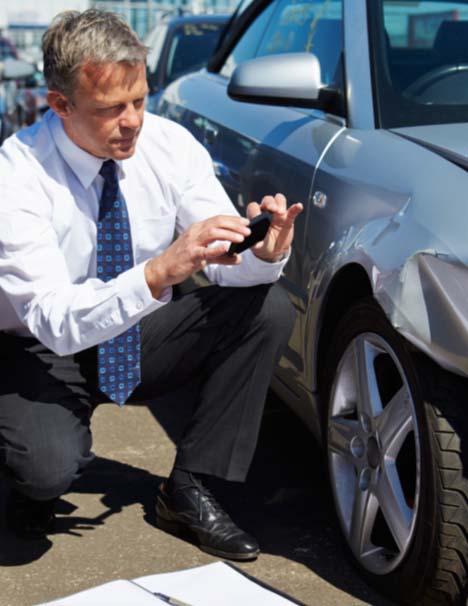
Drive safely.
Drive responsibly.
Drive professionally.
The first step after an accident should be to check for injuries among all drivers and passengers involved, if possible. Do not move anyone from a vehicle unless their life is at risk, such as from a vehicle on fire or a possible explosion.
When the first responders arrive, make sure you get evaluated for signs of concussion and other injuries. Move your vehicle from the roadway, if told to do so by first responders, and contact your fleet manager to report the accident.
If it's safe to move about, you can assess the damage to all vehicles involved. Even if it's a minor accident, exchange insurance and contact information with the other parties and call 911 to file a police report. You should give the police your name, address, company, insurance company and policy number. Fill out an accident report and identify any witnesses.
Do NOT
- Make any comments about responsibility, fault or blame.
- Discuss the circumstances of the accident with anyone, except the police.
- Give information to anyone except party(s) involved.
Taking pictures
You should also take pictures of all damages. Any pictures you take could be important pieces of evidence. Make sure your pictures include the positions of all vehicles involved and their likely points of impact.
Use exterior lighting, when possible, but do not take pictures into the light and be sure to avoid shadows. Your camera settings should be in color, at the highest resolution possible and include the location and image counter. All photos should have date/time stamped on them. Pictures should be saved to your micro SD card, rather than the internal memory. Do not delete any photos even if they are not usable (blurry, out of focus, etc.).
If possible, try to take pictures before the first responders arrive. Start by taking pictures of the entire scene at a distance and include any traffic control signs and devices. Include reference points, such as nearby buildings or other features. Make sure your pictures provide a clear representation of the road and weather conditions. Close-ups should be taken by moving towards the subject, rather than using digital zoom. Include pictures of each vehicle’s interior and the contents, along with participants and witnesses.
If you must edit any images for use in an internal investigation, make sure you edit only the copies of image files, not the originals.
Things to include in pictures:
- Exterior damage to all vehicles in the crash. Include shots of each of the four corners of each car, so the viewer can see sides of the car at once.
- Positions of the vehicles at crash scene. Include nearby landmarks including street lines and lights, and confirm the presence or absence of traffic control signs.
Vehicle license plates. - Interior damage to all involved cars.
- Any debris, skid marks, vehicle parts that are related to the crash.
- Beware when taking photos of third-party witnesses, alcohol that is in plain sight, etc.
- What not to take: Photos of injured victims, blood or bodily fluids.
Processing photos
Remove the micro SD card, if possible, and download the image files to a secure location. Mark the file folder as the original pictures and do not edit them. Store the SD card in a safe location. If the SD card cannot be removed, then download the image files to a safe location. If you must edit any images for use in an internal investigation, make sure you edit only the copies of image files, not the originals.
Media Coverage
Do not speak to reporters unless a company spokesman is present, or you’ve been given permission to speak. Only provide facts; Do not speculate or offer an opinion. Do not answer questions you do not know.
The information contained in this report was obtained from sources which, to the best of the writer’s knowledge, are authentic and reliable. Arthur J. Gallagher & Co. makes no guarantee of results and assumes no liability in connection with either the information herein contained, or the safety suggestions herein made. Moreover, it cannot be assumed that every acceptable safety procedure is contained herein, or that abnormal or unusual circumstances may not warrant or require further or additional procedures.
